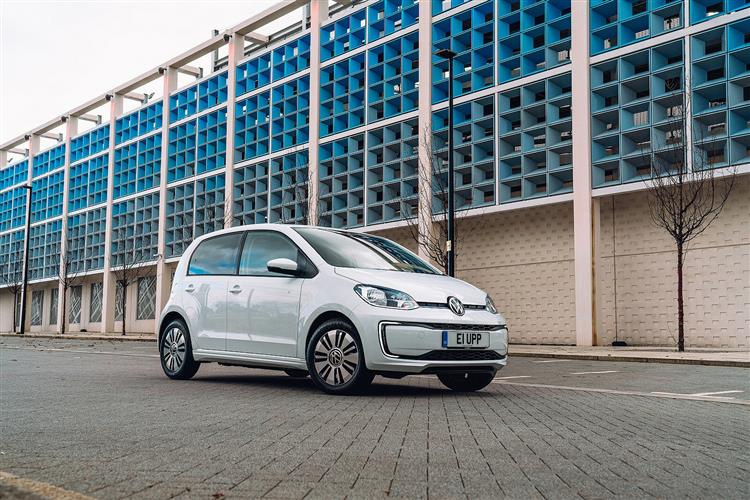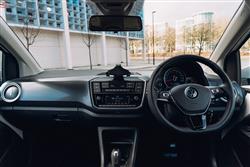BATTERY BASICS (some text hidden) --NONE--
By Jonathan Crouch
Introductionword count: 71
The Volkswagen e-up! is an electric version of the popular up! city car with a now-longer WLTP-rated range of up to 159 miles in its final form. In this later guise, it was a strong package, but after a glance at the used market asking prices, you might wonder how it can justify itself on the balance sheet against a more conventional petrol-powered up! That's what we're here to find out.
Modelsword count: 3
5DR HATCH (ELECTRIC)
Historyword count: 145
Shall we get the jokes about this car being trialled first in Yorkshire out of the way good and early? Let's get to the facts here. Back in 2014, the e-up! was Volkswagen's first toe in the water when it came to electric cars. Back then, the battery range was rated at just 83 miles - and that was on the old, rather unrealistic NEDC cycle. The revised version launched in 2019 was much better. It could, in real terms, go almost twice as far, thanks to a larger lithium-ion battery pack and it was much improved in terms of comfort and connectivity. As it needed to be to combat the new wave of small battery-powered models that by then were hitting the market. Should this one be on your shopping list if you're looking for a tiny EV from its period? Let's find out.
What You Getword count: 385
Externally, the e-up! can be identified by badges on the front wings and boot lid, as well as by distinctive C-shaped LED daytime running lights, and, on post '19-plate models, by 15-inch 'Tezzle' alloy wheels. But these are details. Essentially, aside from the lack of tail pipes, the e-Up (only offered with five doors) is hard to identify from its petrol counterparts without looking for the badging. There are no obvious giveaways to this car's all-electric status once you get behind the wheel. There's a proper ignition slot rather than a start button and even the large analogue fuel gauge looks endearingly conventional. As usual with an up!, the interior feels a slight cut above other city cars in terms of quality. As for connectivity, well as in other up models, you get a smartphone docking attachment that sits above the climate controls and can accommodate handsets with screen sizes of up to 5.5-inches. If you don't want to faff around with your 'phone, the car itself provides this little 5.0-inch 'Composition Colour' touchscreen below the climate controls, which has shortcut buttons for 'radio', 'media' and 'phone' and can display the smallest reversing camera display we've ever seen. What about the rear seat? Well given the dinky exterior dimensions, it's a lot more spacious than you might expect in the back but there are a couple of irritations: first that you don't get proper side windows - just glass panes you can angle out for extra ventilation. Secondly, there's no opportunity to take a third centrally-seated passenger, as you might want to if, say, you were transporting three small children. On the plus side, the up!'s boxy dimensions mean that the roof doesn't taper towards the rear, so there's as much headroom in the back as there is in the front. And out back? Well because there's only an opening glass panel, you've a high lip to lift luggage over, but the boot you'll access is certainly very decently sized for a car of this class, its 251-litre capacity figure being the same as that of the petrol up! variants - which means it's a tad bigger than is typical in this class. The 923-litre capacity with the seats folded is marginally down on the petrol model due in part to the higher floor height.
To see the full road test text contact us on 0330 0020 227
Pictures (high res disabled)

.jpg)
|
.jpg)
|
.jpg)
| |||
.jpg)
|
.jpg)
|
.jpg)
| |||
.jpg)
|
.jpg)
|
.jpg)
| |||

|
Scoring (subset of scores)
Category: Hybrid, Plug-in, Electric & Hydrogen
| Performance | |
| Handling | |
| Comfort | |
| Space | |
| Styling, Build, Value, Equipment, Depreciation, Handling, Insurance and Total scores are available with our full data feed. | |



